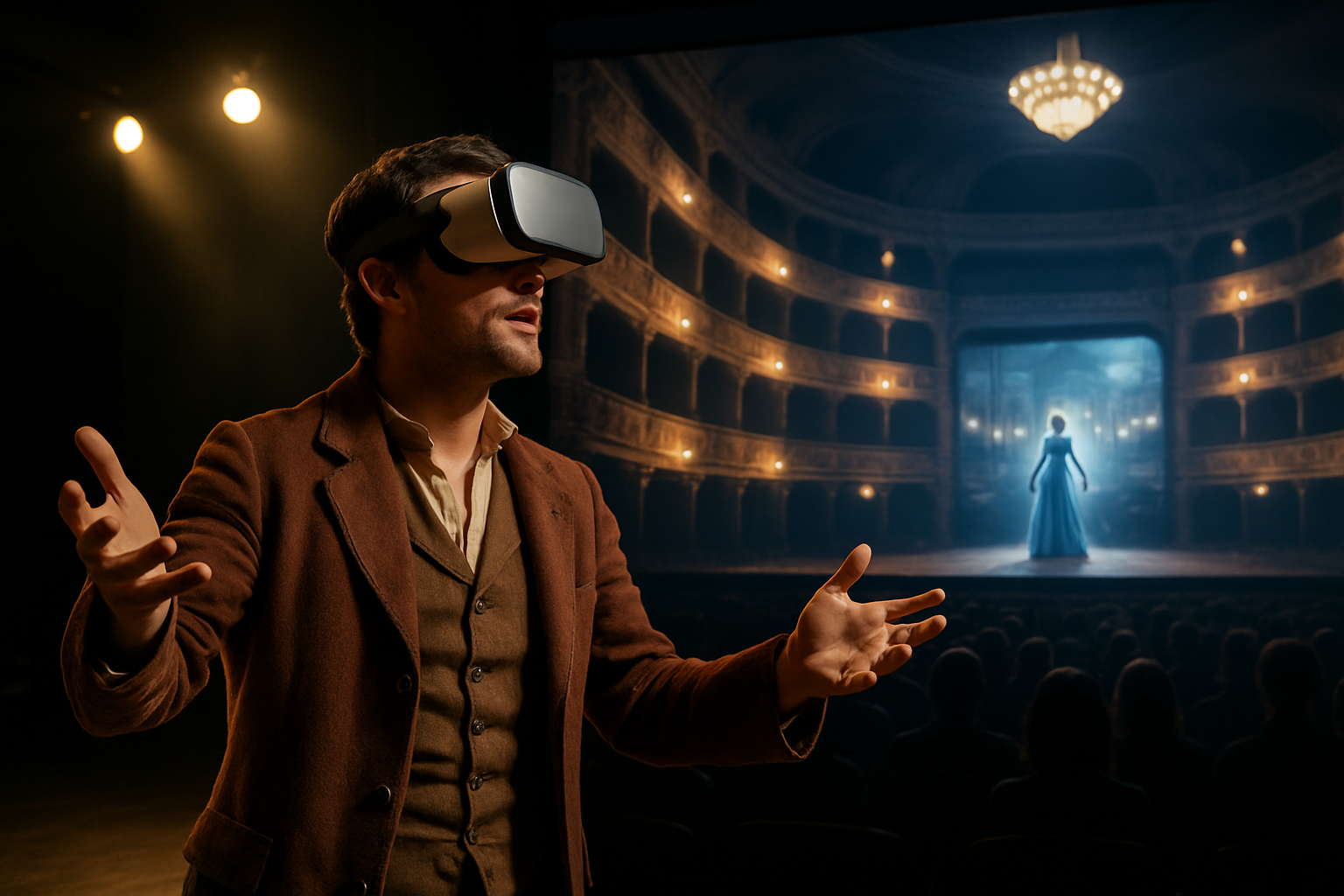Augmented Reality in Performing Arts: A New Stage
In the ever-evolving landscape of artistic expression, a groundbreaking fusion of technology and performance is reshaping the boundaries of theater, dance, and live music. Augmented Reality (AR) has emerged as a powerful tool, transforming traditional stages into immersive, interactive experiences that blur the lines between the physical and digital worlds. This innovative approach is not only captivating audiences but also opening up new creative possibilities for performers and directors alike, challenging the very notion of what constitutes a live performance.

Redefining the Stage
AR has fundamentally altered the concept of stage design. Traditional sets are now augmented with digital overlays, creating dynamic environments that can shift and transform in real-time. This technology allows for instant scene changes, fantastical landscapes, and interactive elements that respond to performers’ movements. Companies like Cirque du Soleil have embraced this technology, incorporating AR elements into their shows to create otherworldly experiences that were previously impossible.
Audience Engagement Reimagined
One of the most significant impacts of AR in performing arts is the transformation of audience engagement. No longer passive observers, spectators can now become active participants in the performance. Through AR-enabled devices or specially designed headsets, audience members can access additional layers of content, choose different perspectives, or even influence the course of the performance. This level of interactivity is fostering a new form of storytelling that is more personal and immersive than ever before.
Bridging Physical and Virtual Performances
AR is also breaking down geographical barriers in the performing arts. Virtual performers can now share the stage with physical actors, dancers, or musicians, opening up possibilities for collaborations that transcend physical limitations. This has led to innovative productions where performers from different parts of the world can appear together in a seamless blend of reality and digital augmentation.
Challenges and Controversies
Despite its potential, the integration of AR in performing arts has not been without challenges. Technical issues, such as latency or device failures, can disrupt the illusion and break audience immersion. There’s also an ongoing debate about whether AR enhances or detracts from the raw, human element of live performance. Critics argue that over-reliance on technology might overshadow the artistry and skill of performers.
The Future of AR in Performing Arts
As AR technology continues to advance, its role in the performing arts is likely to expand further. We’re seeing early experiments with haptic feedback, allowing audiences to ‘feel’ the performance, and AI-driven AR that can adapt the experience in real-time based on audience reactions. The future may hold fully immersive productions where the line between performer and audience, real and virtual, becomes indistinguishable.
In conclusion, Augmented Reality is ushering in a new era for the performing arts, one where the boundaries of creativity are limited only by imagination. As artists and technologists continue to collaborate and innovate, we can expect to see even more groundbreaking productions that challenge our perceptions of live performance and redefine the relationship between art, technology, and audience engagement.





